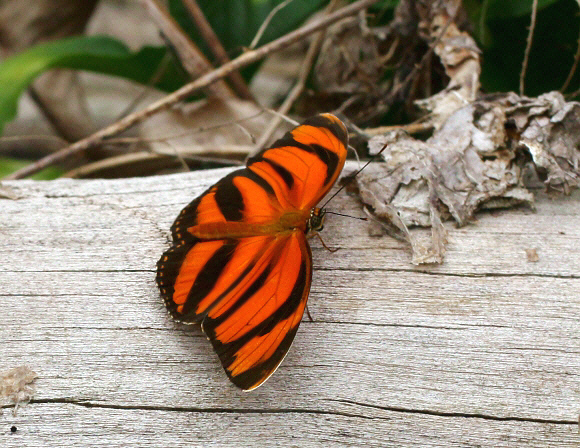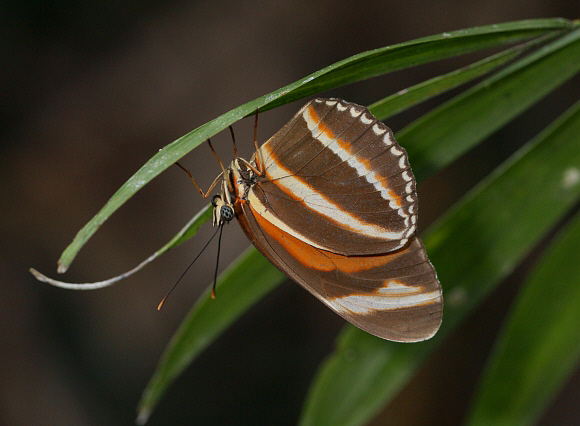 Dryadula phaetusa, Rio Pindayo, Peru – Adrian Hoskins
Dryadula phaetusa, Rio Pindayo, Peru – Adrian Hoskins
Introduction
The Heliconiinae is divided into 3 tribes Acraeini, Argynnini and Heliconiini. The latter are colloquially known as Longwings and are confined to the neotropical region. They are easily recognised by their distinctive patterns, elongated forewings and characteristic delicate fluttering flight.
The subtribe Heliconiini includes Heliconius ( 39 species ), and the smaller genera Dryas, Podotricha, Philaethria, Laparus, Eueides, Neruda, Agraulis, Dione and Dryadula. The latter is distinguished by its broader wings, shorter antennae and instantly recognisable tiger striped pattern.
Dryadula phaetusa is the sole member of its genus. It is a common and widespread species found from Mexico to Brazil and Bolivia.
Habitats
This species occurs at elevations between 0-1000m. It can be found in disturbed areas including forest clearings, pastures, riverbanks and roadsides through rainforest or deciduous woodlands.
Lifecycle
The larva is dull purplish in colour and covered in short bristly spines. It feeds on Passiflora.
Adult behaviour
Males have regular perching places, typically settling on a log or tree stump near the forest edge, and will return repeatedly to the same perch after being disturbed. In early afternoon they patrol in search of females, which they pursue until the latter settle on the ground, usually beneath a bush or tree. The male flutters around the female in a figure-of-eight movement before settling beside her. If she is receptive she remains motionless, and the male then half opens his wings. He then flutters them very rapidly for a few seconds to direct his pheromones towards her antennae, which has the effect of placating her. The male then curves his abdomen around to make contact and copulate. Once joined he adjusts his position so that the butterflies are facing away from each other.
Both sexes nectar at Lantana and Asclepias flowers.
Just before dusk the butterflies settle under the leaves of bushes, where they spend the night. This species in common with many other Heliconiines roosts gregariously overnight.
 Dryadula phaetusa, Rio Pindayo, Peru – Adrian Hoskins
Dryadula phaetusa, Rio Pindayo, Peru – Adrian Hoskins
